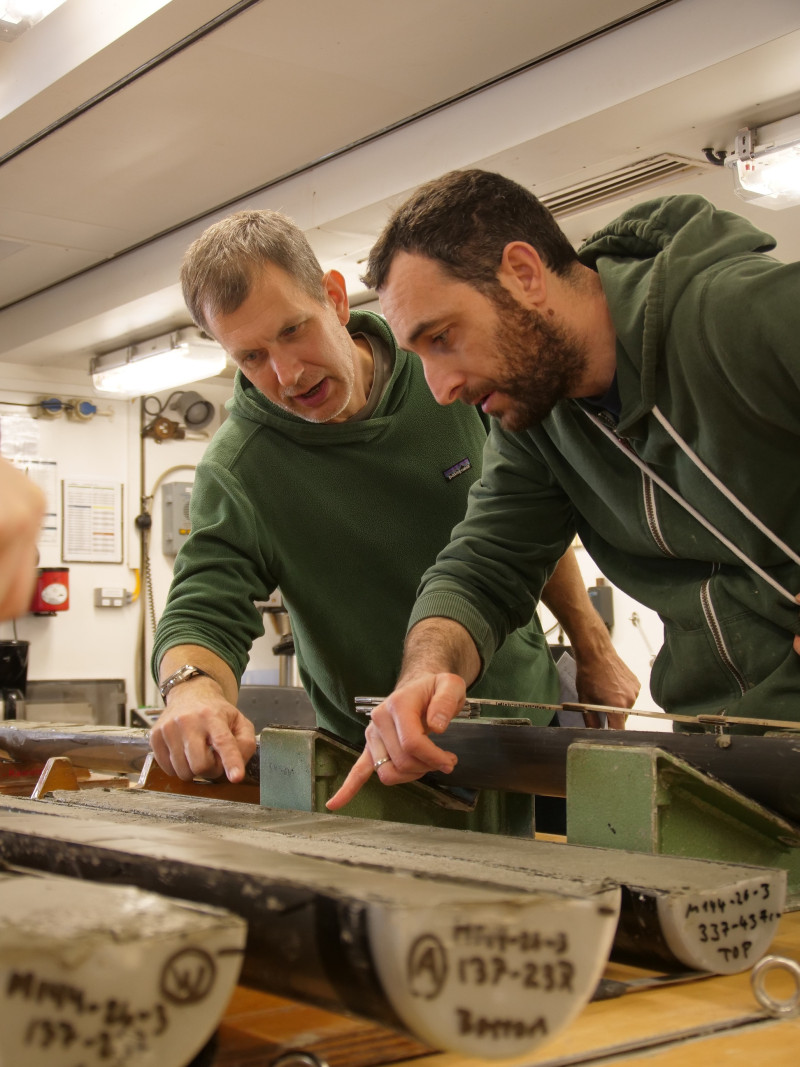At the core of the sediment by the Philippine Tenagus, the researchers found the oldest recorded signal of continuous anthropogenic pollution by lead
Research team, with the participation of Greek scientists, has identified the oldest recorded anthropogenic pollution of lead in the Tenagus of Philippi before 5.200 years, but also the first large -scale marine pollution in antiquity in the Aegean. According to the results of the survey, published in the journal Earth & Environment magazine, Ancient Greek and Roman cultures They left their environmental footprint strongly.
The research team, led by the Greek researcher of the Geosciences Institute of the University of Heidelberg, Dr. Andrea Koutsodenndri and the participation of the Hellenic Center for Marine Research, focused on the Aegean region, where some of the first ancient European cultures were created.
Scientists studied 14 seawater cores that had been collected between 2001 and 2021 from the bottom and the Aegean Sea coastlines and a sediment core from the Tenagus of Philippi. They then explored the chemical composition and pollen plants in the sediments in order to see how the Aegean ecosystems were influenced by social and cultural changes in different historical periods.
At the core of the sediment by the Philippine Tenagus, the researchers identified the oldest recorded signal of continuous anthropogenic lead pollution, dating back to about 5,200 years ago in the Bronze Age. It may have been known to archaeologists that metallurgical activity in the southern Balkans begins about 7,000 years ago today, but this finding is the oldest recorded and even dates back to about 1,200 years earlier From the previous local lead pollution on the Balkan peninsula.
“We did not accidentally choose Philippi Tuna. We know from archaeologists that early metallurgical activity is found in the wider area of the North Aegean. Also, we must not forget that in the Tuna of Philippi we have one of the most important Neolithic settlements in Greece, Dikilis, while in Pangaio we know that there are large silver and gold deposits and mines were made in antiquity, “he explains to RES-EIA. Andreas Koutsodendris.
The findings were also impressive during the study of the nuclei of marine sediments: increased lead pollution was found about 2,150 years ago, which, as Mr Koutsodendris points out, is “the first recorded large -scale marine pollution”. At the same time a large pollution is again found in the Tuna of Philippi. This period coincides with the expansion of the Roman Empire and the subsequent increase in the mining of gold, silver and other metals. Professor of Archeology at the University of Heidelberg, Joseph Maran, who participated in the research, points out that “The changes coincide with the conquest of Hellenistic Greece by the Romans, who then claimed the wealth of the resources of the region for themselves.”
The lead study was ultimately in the research the means of reconstitution of socio -economic changes in the Aegean in antiquity. Mr. Koutsodendris describes in RES-EIA:
“Since the Bronze Age we have been pollution in the Aegean region and this pollution in the marine environment is clearly shown in 2,150 years before today, when the Roman Empire is expanding to the East and conquers ancient Greece and the Romans continue to exploit natural resources. . This holding continues during Byzantine era And as far as the Aegean is concerned, we see in essence a decrease in lead during the Ottoman Empire, which again shows social changes, because in the Ottoman Empire the economic center is transferred elsewhere and while in Greece pollution is reduced, in other areas of other areas. Europe is growing. “
An important research tool was also the study of pollen contained in the kernels of sediments. “The reason we studied pollen is because it is transferred to relatively long distances, to a few tens of kilometers. And this was important to us because we didn’t just want to see a local environmental change, but to have a broader picture of what is happening in the Aegean and when there are broader changes, “says the Greek researcher at the University of Heidelberg.
With the help of pollen, scientists were able to reconstitute the development of vegetation in the Aegean region. They found that the increased lead concentration of lead 2,150 years ago on land and at sea was accompanied by a strong deforestation of the forests mainly at low altitudes and growth of crops. “The combined data on lead infection and vegetation development shows when the transition from agricultural to monetary societies took place and how it influenced the environment,” notes Professor Yorga to, researcher of paleoclimatology at the Institute of Geosciences.
“We essentially suggest that 2,150 years ago we have a great change in ecosystems because of human intervention, and from that point on, we enter a completely different situation in the natural environment, with man now defining it. That is, human intervention continues unabated, and earlier, during the copper era there is surgery, but it is mainly local in nature and if the exploitation of an area stopped, the forests could potentially return to earlier natural levels, ”K. .
Next ‘bet’ of the research team is studying the different geochemical signature of each lead finding to identify where the pollution comes from, so to find out the movement of antiquity economic centers. Also one question they will attempt to answer is whether this pollution that It influenced the food chain in the marine environment.
Source: Skai
I have worked as a journalist for over 10 years, and my work has been featured on many different news websites. I am also an author, and my work has been published in several books. I specialize in opinion writing, and I often write about current events and controversial topics. I am a very well-rounded writer, and I have a lot of experience in different areas of journalism. I am a very hard worker, and I am always willing to put in the extra effort to get the job done.











